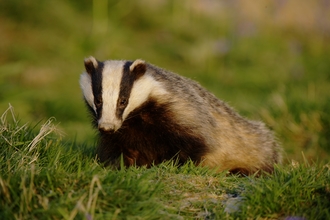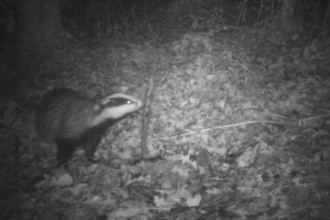Expanding the cull in this way would go against Government assurances in March this year that they would move towards vaccinating rather than culling badgers (1) as part of their efforts to stem the spread of bovine tuberculosis (bTB). According to a leaked report of this year’s upcoming cull zones, most of these new cull areas are not at high risk from the disease. Worse still, most are places where Wildlife Trusts have been vaccinating hundreds of badgers against the disease with the support of significant Government funding.
This week, the government published its response (2) to a consultation on culling and vaccination in Edge Area counties – these are counties close to those where bTB is more widespread such as Shropshire. Some of these areas will now be targeted for Government culling. In the recent consultation the Wildlife Trusts recommended a minimum of 7km between cull and vaccination areas. However, the new consultation response says the government will allow culling with only very small buffer zones of between 200 metres and 2 km.
The small size of the proposed buffer means that badgers which have been vaccinated may be shot – despite the fact that government funding has helped Wildlife Trusts develop badger vaccination programmes.
The Wildlife Trusts oppose culling and believe the science used to justify the killing of thousands of badgers every year in the UK is flawed. Evidence shows that bTB is primarily a cattle problem, not a wildlife one (3). The main route of bTB transmission in cattle is between cattle.
At least seven new counties could see a badger cull starting this September. These include Shropshire, where the cull will be continued and expanded according the reports, as well as areas of Derbyshire, Nottinghamshire, Oxfordshire, Warwickshire, Leicestershire and Lincolnshire. The new counties add to a growing list where the Government is allowing badgers to be shot resulting in a total of 54 areas of England allowing the shooting of up to 64,000 badgers.
Colin Preston, Chief Executive Officer for Shropshire Wildlife Trust said:
“We are deeply saddened to hear the cull is being extended in Shropshire. We’ve run a vaccination programme on one of our reserves plus the local Badger Group are vaccinating in several areas. The cull will be disruptive and could see vaccinated badgers killed which is a total waste of resources.”
Derbyshire Wildlife Trust lead a flagship badger vaccination project coordinated with others and 50% funded by DEFRA. The Trust had hoped to expand the vaccination programme significantly over the coming year but a cull in the area will make expansion very difficult.
Dr Jo Smith, chief executive for Derbyshire Wildlife Trust said:
“Derbyshire Wildlife Trust runs the largest and most established Government funded vaccination programme and we are deeply concerned that a cull will result in vaccinated badgers being shot, disrupting the evidence gathered from vaccination trails taking place across England. The evidence shows that badgers are not the primary cause of the spread of bovine TB in cattle and our research published earlier this year (4) shows the evidence used to justify a cull is flawed. We are utterly horrified that a cull could come to Derbyshire.”
Earlier this year the Government said in the Godfray review (1) that it intended to move away from culling and wanted to expand badger vaccination.
What can you do to help?
The best way to let the government know that the cull is a terrible idea is to write to your MP.
Editor’s notes:
- A strategy for achieving Bovine Tuberculosis Free Status for England: 2018 review, led by Professor Sir Charles Godfray https://www.gov.uk/government/publications/a-strategy-for-achieving-bov…
- Bovine TB: badger vaccination and culling in England’s Edge Areas https://www.gov.uk/government/consultations/bovine-tb-badger-vaccinatio…
- Donnelly, CA & Nouvellet, P., 2013. The Contribution of Badgers to Confirmed Tuberculosis in Cattle in High-Incidence Areas in England. PLoS Currents: Outbreaks. http://currents.plos.org/outbreaks/article/the-contribution-of-badger-t…
- Critical evaluation of the Animal and Plant Health Agency report: ‘Year End Descriptive Epidemiology Report: Bovine TB Epidemic in the England Edge Area – Derbyshire 2018’E. Wright BVSc Cert VA Dip (AS) CABC MRCVS & S. Mayer BSc BVSc PhD MRCVS https://www.derbyshirewildlifetrust.org.uk/blog/critical-evaluation-ani…
Bovine tuberculosis is a highly infectious disease of cattle which devastates thousands of farming businesses annually. Since the mid-1980s, the incidence of bovine TB in cattle has increased substantially creating an economic burden on the taxpayer and the farming industry, as infected cattle must be culled.



